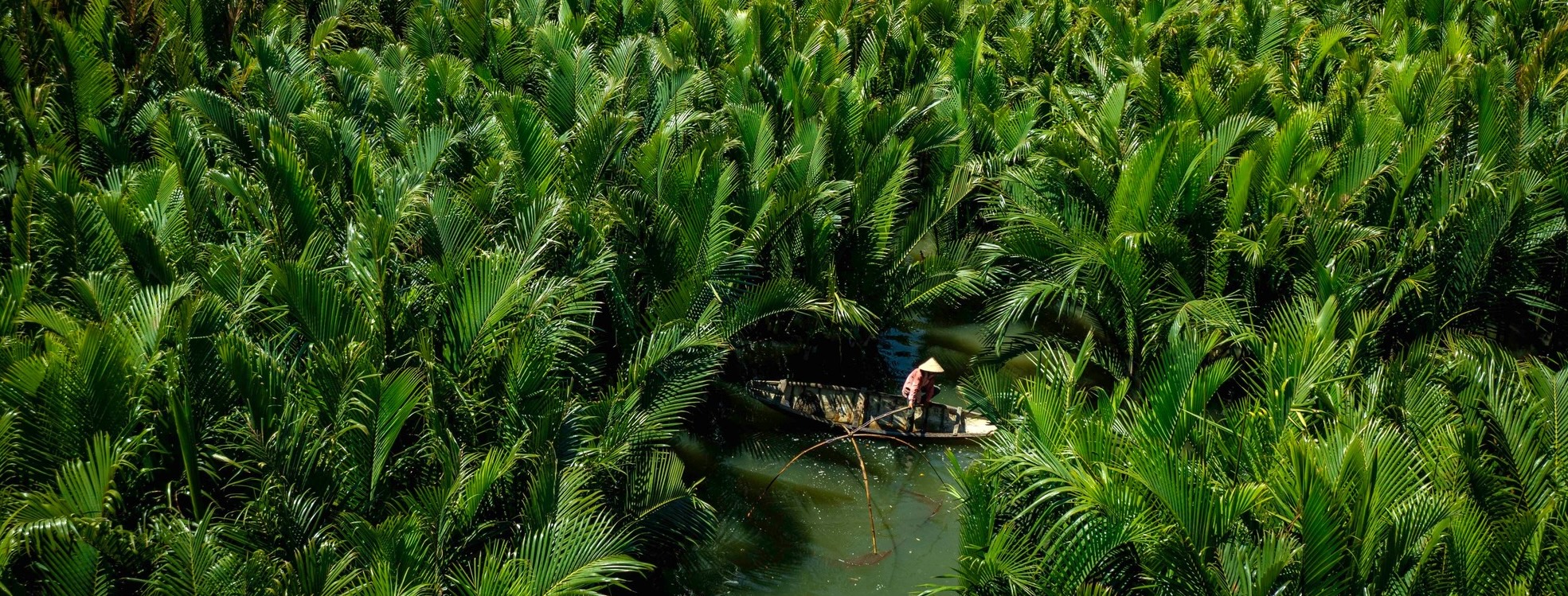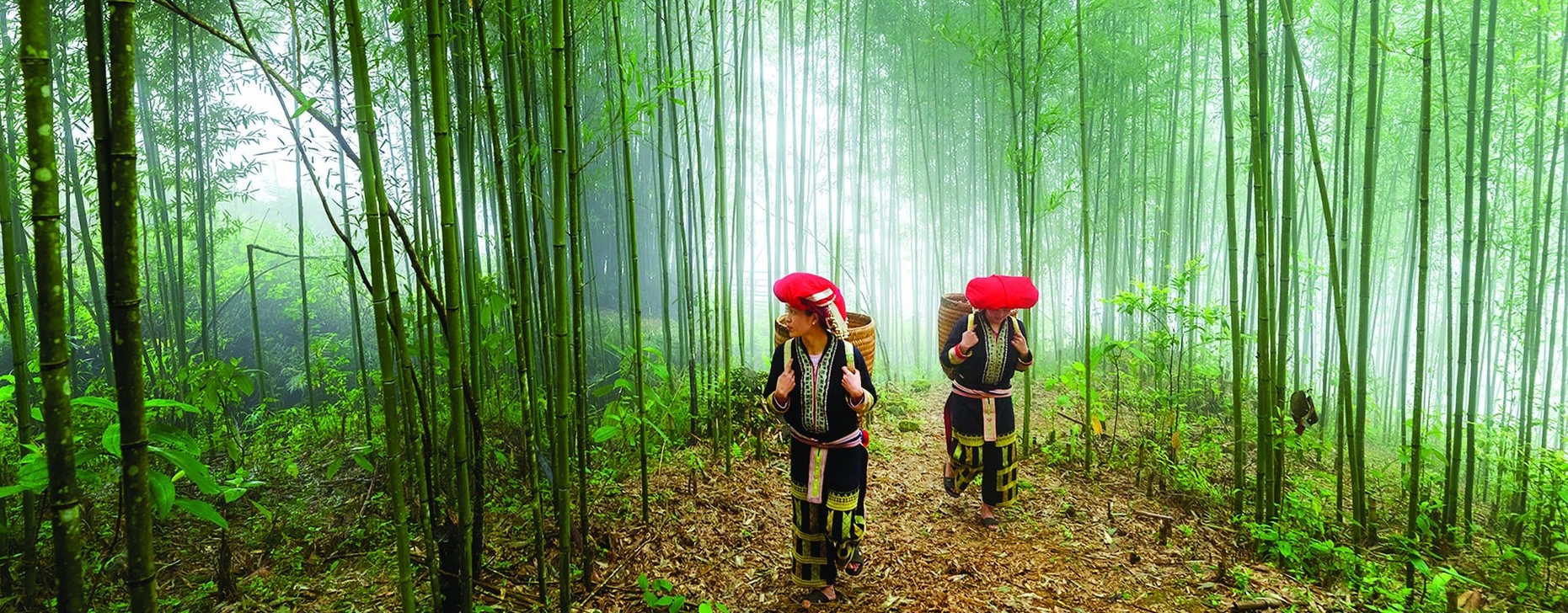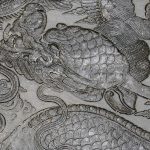Tree songs
Popular songs reveal Vietnamese people’s profound connection with nature. These songs make listeners remember the distinctive features of each region, evoking Konia trees in the Central Highlands, coconut palms in the Southern region, and Indochina dragonplum trees in Hanoi. Songs about special trees in people’s homeland evoke memories of many ethnic groups across Vietnam. Thanks to these diverse lyrics and melodies, green trees from the North to the South have become cultural symbols of each region.
Long-standing settlement habits associated with cultivation have created a culture closely tied to vegetation, where trees are viewed as sacred, the dwelling places of deities, and home to the village’s soul. This has inspired countless artworks.

The northern border region boasts precious trees like star anise and cinnamon, as well as familiar flowering species like peach, apricot, and plum, all of which have been sung about. For generations, people of Tay and Nung ethnicity have sung about the famous trees in their homeland in the song “Huong hoi xu Lang” (composed by Ngo Quoc Tinh), while Dao people in Yen Bai province sing about the cinnamon forest in the song “Trang sang tren rung que” (composed by Trong Loan). The Hmong, along with the Kinh, Dao, and Giay people, take pride in their homeland’s nature through the song “Sa Pa thanh pho trong suong” (composed by Vinh Cat): “We meet in a garden full of ripe fruit, you give me a branch of purple plums, sending to the front line the seeds you planted, sending to the border your love.” The purple color of plums has become a romantic highlight in this famous tourist spot.
The distant borderlands seem closer to the lowlands thanks to the trees and flowers described in songs that evoke the cultural features of various ethnic groups, connected by their love for this country: “Oh dear, is there any place more beautiful than the border in the afternoon when the peach blossoms bloom, when the camellia trees sprout.” (Chieu bien gioi – composed by Tran Chung, lyrics by Lo Ngan Sun).

Covered by tall forests along the Truong Son range, the Central Highlands is home to about 18 indigenous ethnic groups, including the Bana, Gia Rai, E De, M’Nong, Co Ho, Ma, etc.. Here, people’s lives are closely tied to the ancient trees that they consider sacred. People from far and wide associate the Central Highlands with the image of the Polang tree, also known as the cotton tree or bombax, “the most beautiful in the Central Highlands forest” (from the song Em la hoa Polang – composed by Duc Minh) and the konia tree, which has become a symbol of Central Highlands people: “where do the roots drink water, drink water from the northern source” (from the song Bong cay Konia – composed by Phan Huynh Dieu, lyrics by Ngoc Anh). Today, when mentioning the Central Highlands, people immediately think of coffee bushes thanks to “forest rock” songs like “Ly ca phe Ban Me” (composed by Nguyen Cuong).

It’s impossible to imagine a village in Vietnam’s Northern Delta without a banyan tree by the village’s entrance, a cotton tree by its ferry wharf, and a bodhi tree in the temple yard. There is even a famous Quan Ho folk song about a banyan tree – “Ly cay da”: “Climbing up the slope to sit at the foot of the banyan tree, I sing a tune. If anyone loves me, come to the festival on the full moon night…” The echo of this Quan Ho song leads listeners back to banyan trees near village tea stalls, to slopes along the dikes, and to poetic rivers like the Cau River, the Duong River, etc.
From its role as a territorial marker, the shade cast by an ancient banyan tree creates a romantic setting for the village, serving as an emotional anchor for those far from home who are homesick: “The village boys who go to the army always remember their homeland, remember the water well, remember the banyan tree.” (Excerpt from the song “Tinh dong chi” – composed by Minh Quoc, verse by Chinh Huu).

The garden’s green bamboo hedges, the rustling wind, and the shadows cast by familiar areca palms have entered poetry and music. Bamboo hedges not only serve as fortifications protecting the village but also as a source of building materials. Therefore, in the countryside, Vietnamese people sing many songs about these distinctive rural images, such as the song “Lang toi”: “Faintly in the distance, behind the bamboo hedges, lies my village, the silhouettes of houses have sown the seeds of my loving homeland” (composed by Ho Bac). The trees praised in songs, both gentle and resilient, became a great source of encouragement for Vietnamese people throughout their long years of resistance.





